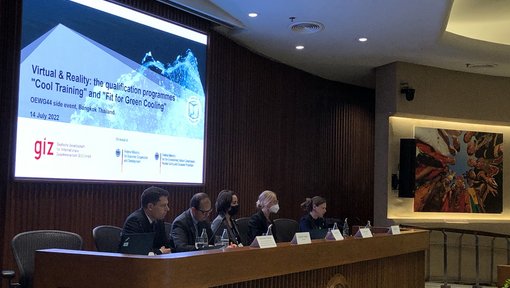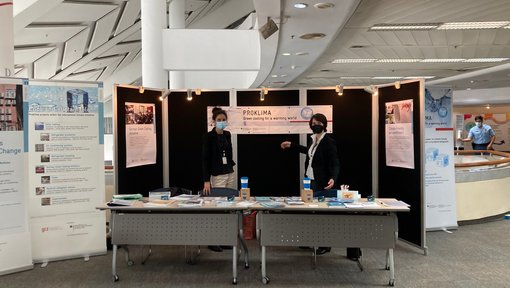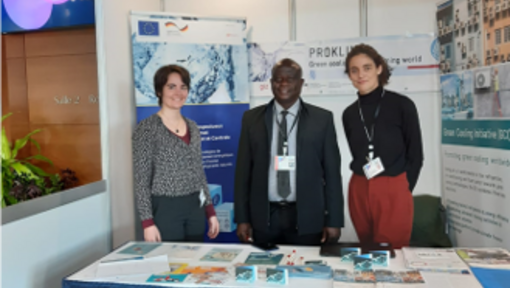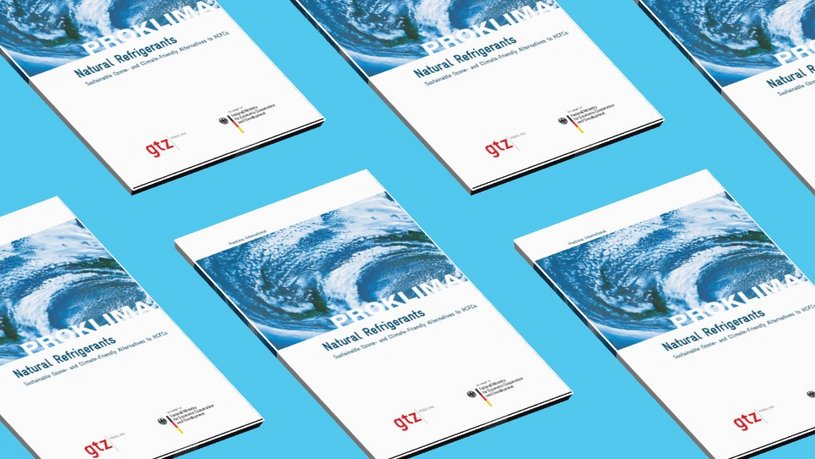This publication attempts to provide information and guidance to decision makers in developing countries, both in government and the private sector. It demonstrates which ozone- and climate friendly alternatives to fluorinated refrigerants are available in the market and why and how they should be applied.
It is now common knowledge that the Montreal Protocol in its effort to phase out the use of ozone depleting substances, especially CFCs, also alleviated the growing climate problem significantly. Some say the world was given a grace period of 10 years in which to react to the potentially cataclysmic effects of climate change. It could have been done even better – if a big chance presenting itself in the mid 1990s would have been taken instead of being missed. At that time there was for example an opportunity to convert the household refrigeration technology directly from CFCs to hydrocarbons, which have no adverse effects on the ozone layer and the climate, and which were already well known and available at that time. German hydrocarbon based “Greenfreeze” technology (the name given by reenpeace) using hydrocarbons as refrigerant and also to produce the insulation foam was transferred first to the Chinese refrigerator manufacturer Haier in a partnership between the US-Environmental Protection Agency, the German Ministry for Economic Cooperation and Development through GTZ-Proklima and Greenpeace. Soon afterwards the Swiss-Indo-German ECOFRIG project introduced this technology to the Indian refrigerator company Godrej. Unfortunately, these conversions never became a trend outside Europe, mainly due to misinformation about the alleged dangers of natural refrigerants. This continues to this day and at this juncture, just after the adjustment of the Montreal Protocol to achieve an early phase out of HCFCs, the last major group of ozone depleting substances with high global warming potential, we might miss another opportunity unless we are watchful.
Haier and Godrej continued and increased their production of hydrocarbon based refrigerators which have a superior performance. Several other companies followed suit. Fortunately, some manufacturers, while mainly producing equipment based on HCFC and HFC refrigerants with high Global Warming Potential, still persisted to use and improve natural refrigerant technology. Carefully avoiding the noise of deliberate and unjustified bad publicity, a small but significant number of local and international companies decided quietly to adopt the concept of natural refrigerants anyway. They convinced themselves that the technology is not only better, from a physical and environmental point of view, but that the issue of “safety”, by all reasonable interpretations of this term, need not be compromised. Most importantly for cost conscientious businesses, using natural refrigerants actually helps to save money through improved energy efficiency and reduced servicing costs. Today Haier is the largest refrigerator manufacturer in China and already 80% of Chinese domestic refrigerator production is based on hydrocarbon technology.
The big challenge for the coming years is to establish natural refrigerant technology to substitute HCFCs in air conditioning and commercial refrigeration applications.
In recent years, some of the largest companies in the retailing, food and beverage sectors in Europe and Australia started to convert their commercial refrigeration systems to natural refrigerants.They now actually advertise their use of natural refrigerants to signal corporate responsibility to their customers. In September 2007 the Parties to the Montreal Protocol reached consensus on the early phase out of HCFCs. Because of economic growth and increasing wealth the sharply growing volume of these substances threatens to off-set the successes reached so far through the implementation of the Montreal Protocol. This is not only the case with regard to their detrimental effect on the ozone layer. Equally important, their high global warming potential rapidly offsets the climate benefits achieved through the phase-out of CFCs. The decision of the Parties to the Montreal Protocol, while primarily focusing on the ozone depleting potential of HCFCs, recognized the necessity to take into consideration the climate effects of the replacement technologies. In the refrigerant sector two mature technologies, fluorinated refrigerants (HFCs) with their high global warming potential as well as environmentally friendly natural refrigerants (hydrocarbons, ammonia and CO2) are available. However, HFCs still dominate the market outright and natural refrigerants, despite their superior properties, still remain in the shadows, largely because exaggerated safety concerns have not been addressed properly. But if HFCs will replace HCFCs in any substantial manner, the climate benefits of the Montreal Protocol will be lost within a short period of time.
The adjusted Montreal Protocol clearly calls for environmentally superior replacements of HCFCs in order not to squander already attained and further achievable climate benefits. Because of this, this book became possible. And because of the rapidly deteriorating global climate this book became a necessity. The world simply cannot afford to lose this opportunity a second time. This publication attempts to provide information and guidance to decision makers in developing countries, both in government and the private sector. It demonstrates which ozone- and climate friendly alternatives to fluorinated refrigerants are available in the market and why and how they should be applied. We are aware of the wide audience with varying interests and information needs and hope to provide thorough opinions from authoritative experts and convincing examples of operational refrigeration systems with natural refrigerants. Everyone concerned with the replacement of HCFCs through sustainable technologies will find a wealth of knowledge on many aspects relevant to their current work, which will enable them to take an informed decision.
The publication covers the main areas to be considered when planning for an early HCFC phase out and conversion to natural refrigerants: policies and legislation regarding fluorinated refrigerant gases and appropriate alternatives, safety issues associated with flammable or toxic refrigerants, assessment of the performance of natural refrigerants in different applications and environments, actual examples, case studies and market developments. The information was provided by professionals whose integrity and authority is immaculate. In our quest to contribute to the welfare of future generations we are very grateful to them.

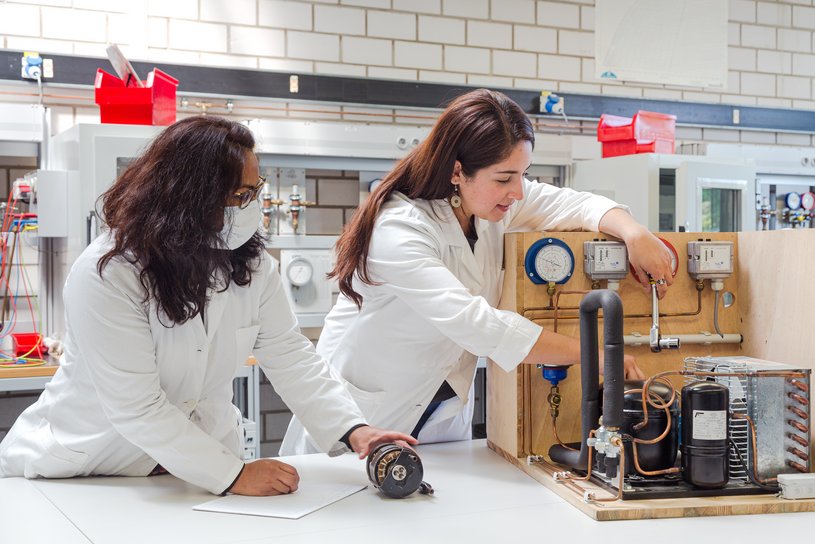 Image: giz / Andreas Döring
Image: giz / Andreas Döring